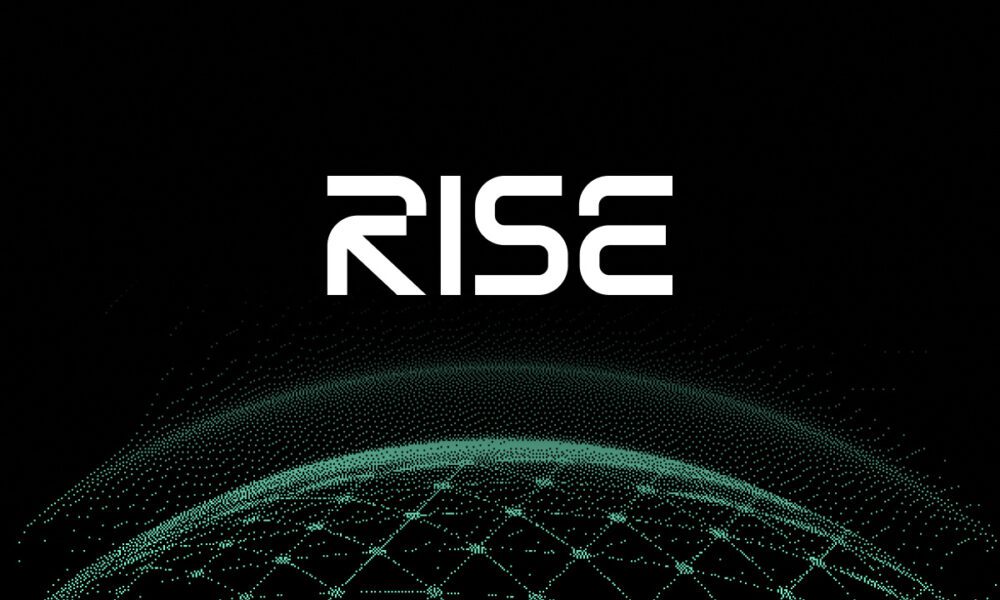Modern healthcare operates inside a data deluge. Every blood gas result, every reimbursement code, and every nurse’s shift handoff generates data that, in aggregate, dwarfs the holdings of many national archives. For decades, that data collected dust in proprietary databases, accessible only to technical specialists and summoned slowly by retrospective reports that arrived long after the decisions they might have informed were already made.
Experts of a custom healthcare software development company, Belitsoft, explain why today, business intelligence (BI) is at the center of strategic planning, quality improvement, and clinical decision-making, converting raw clinical, financial, and operational data into a single, continuously refreshed asset that clinicians, executives, and patients can interrogate.
No More After-the-Fact Reporting
BI is a technology-driven process for collecting, analyzing, and presenting information. In healthcare, however, the stakes are higher than in almost any other industry. The output of a BI dashboard can influence a surgeon’s choice or a public health department’s response to an emerging infectious threat. When the chief medical officer wants to know whether the hospital’s new rapid response protocol is saving lives or merely shifting workload, she no longer submits a ticket to a back-office analyst. Instead, she opens a governed dashboard that blends vital sign feeds from the electronic health record (EHR), staffing rosters from the workforce management system, and outcome data from the national quality registry. If necessary, she drills from cohort-level trends down to individual patient journeys — sometimes to individual progress notes transcribed an hour earlier.
This real-time, self-service capability is the hallmark of modern BI. Patterns emerge that would have remained invisible in siloed data sets: an unexplained rise in sepsis among weekend admissions, a cluster of supply chain bottlenecks triggered by a single vendor, a correlation between telehealth follow-up and lower thirty-day readmission rates. Instead of reacting after costs or complications have already risen, leaders can intervene early, often before harm occurs.
Why Healthcare BI Matters
Since the Institute for Healthcare Improvement proposed its “Triple Aim” framework — better outcomes, lower per capita cost, and improved patient experience — every technology investment has been justified by reference to at least one of those goals. Business intelligence is unusual in that it speaks convincingly to all three.
Better patient outcomes
Clinicians still rely on training, intuition, and experience, but the complexity of modern medicine demands quantitative backup. BI provides the scaffolding: risk-adjusted mortality curves, benchmarking against peer institutions, and cohort analytics that reveal how a new evidence-based protocol is performing in practice. Predictive models built on historical data can warn staff when a patient’s lab trends resemble the early trajectory of sepsis or acute kidney injury. Nurses see colored alerts on their workstation or mobile app, triggering early intervention that reduces morbidity without increasing alarm fatigue. Over time, aggregated outcome analytics allow hospitals to refine care pathways.
Operational efficiency
Hospitals are high-variety, high-variability organizations. Operating room turnover, pharmacy inventory, bed management, and environmental services dispatch — each process has its own tempo, and delays can ripple unpredictably. BI turns that variability into structured insights. A command center screen might display median length of stay by diagnosis-related group, outpatient no-show rates by clinic, or staffing levels against predicted patient volumes. Because the dashboards update minute by minute, unit managers can allocate nurses before a surge hits, and perioperative services can open a flex theater before the elective backlog tips into overtime. These micro-adjustments accumulate into measurable cost savings.
Data-driven decisions across the enterprise
When clinicians see the same numbers as finance and operations — literally the same, not a reconciled copy — arguments shift from whose spreadsheet is correct to what policy will best achieve the shared goal. The single source of truth (SSoT) might be in a lakehouse or an appliance-based warehouse, but its defining characteristic is trust. Executives trust that the sepsis bundle completion rate displayed in the board packet matches what unit directors see in their service line dashboards, and clinicians trust that resource constraints cited by finance are grounded in the same cost allocation logic used for departmental budgets. Trust begets collaboration, which in turn drives faster, more coherent decisions.
BI Maturity
Not every organization is ready to leap straight into predictive or prescriptive analytics. The classic four-stage maturity model — descriptive, diagnostic, predictive, prescriptive — provides a roadmap.
- At the descriptive stage, hospitals automate static reports that once arrived in monthly binders.
- At diagnostic — they begin asking why those numbers moved.
- Predictive capability follows, leveraging machine learning to forecast readmission probability or imaging case volumes.
- Finally, prescriptive analytics recommends specific actions: schedule an early physical therapy session for Patient X, divert ambulance traffic to Campus Y, reorder anti-infective Z before the weekend.
There is a direct correlation between BI maturity and margin resilience, especially under value-based care contracts where revenue depends on quality metrics and cost containment simultaneously. Yet tools alone cannot lift an organization to the top tier. Data literacy must spread beyond the informatics department. Front-line staff need to understand both the definitions behind the numbers and the limits of the models’ reliability.
Architecture that Makes BI Possible
Integrating diverse data sources
Healthcare data are notoriously fragmented. EHR vendors use proprietary schemas. Claims clearinghouses follow a billing-centric logic. Patient experience surveys add qualitative nuances. Wearables stream continuous physiologic telemetry. Each source contributes important context, but integrating them is not trivial.
Structured EHR fields such as LOINC or SNOMED codes at least have controlled vocabularies, whereas free-text notes mix jargon, abbreviations, and colloquialisms. Claims offer long time frames and cost detail but lack clinical granularity. IoT devices flood the system with high-velocity readings that must be filtered for relevance and stored economically.
The reward for mastering this complexity is a longitudinal, 360-degree patient view that supports everything from medication adherence studies to detailed cost-to-serve calculations.
The data engine: warehouse, ETL/ELT, and MDM
Whether the central repository is an on-premises appliance, a cloud-native lakehouse like Snowflake, or a hybrid architecture, it must support both batch and streaming ingest, handle petabyte-scale images, and comply with HIPAA at a minimum. Extraction, transformation, and load (ETL) processes dominate in regulated environments because they enforce data quality up front. In cloud settings, extract, load, and transform (ELT) lets analysts experiment on raw data with on-demand compute.
Healthcare-specific transformations are critical: ICD-10 mapping, NLP parsing, privacy-preserving de-identification. Master Data Management (MDM) overlays the engine by resolving patient and provider identity across source systems — creating a so-called golden record. Without MDM, dashboards would double-count patients or misattribute outcomes, undermining the very trust that BI is meant to establish.
Analytics and Reporting
On top of the data engine is the visualization and analytics tools.
Dashboards show key performance indicators. Scorecards monitor progress against targets, and governed self-service environments allow department heads to build ad hoc analyses without filing IT tickets.
Sophisticated organizations embed analytics directly into clinical workflows. A physician reviewing the medication list can click into a risk-of-readmission graph without switching screens.
The key is usability: if clinicians find the interface clunky or slow, adoption plummets, and so does data quality as user-entered fields become sporadic.
Advanced technologies: AI, ML, and NLP
Artificial intelligence, particularly machine learning, enhances BI by turning historical data into predictive insight.
In radiology, convolutional neural networks now rival experienced specialists in detecting fractures or lung nodules. Epidemiologists train gradient-boosting models to forecast influenza spread two weeks ahead of the public health reports. Natural language processing (NLP) mines unstructured clinical notes — still estimated to hold up to eighty percent of useful patient information — for symptoms, social determinants, and sentiment.
Vendors speak of “augmented intelligence” to emphasize the symbiosis between algorithms and human judgment. Clinicians remain the ultimate custodians of patient welfare, and explainable AI techniques help them understand how a model reached its conclusion.
Healthcare BI Market
Organizations generally choose from four overlapping categories of BI solutions.
First are the horizontal platforms such as Microsoft Power BI, Tableau, Qlik, and Google Looker. Hospitals already invested in the Microsoft stack find Power BI’s governance and Active Directory integration persuasive, while Tableau’s drag-and-drop exploration appeals to analysts who value rapid visual discovery. Qlik’s associative engine excels at unguided analysis where users do not know which dimension will reveal the hidden pattern. Looker, recently rebranded under Google Cloud, pushes its LookML semantic layer and API-first design, suiting companies that embed analytics into their own patient-facing apps.
Second are specialized healthcare suites, often built by long-standing industry players. IBM’s Watson Health — now operating as Merative — pairs deep analytic tooling with curated content such as oncology pathways. SAS Viya banks on explainable AI to satisfy cautious clinicians and regulators. IQVIA leverages massive proprietary data sets for life science clients interested in real-world evidence and commercial performance.
Third are EHR-embedded analytics. Epic’s Cogito stack allows users to consume risk scores inside the same interface where they write orders, though critics complain the platform is closed and configuration-heavy. Cerner — now Oracle — positions HealtheIntent as vendor-agnostic population health infrastructure. PointClickCare addresses long-term and post-acute care, a sector often overlooked by acute-care-centric vendors. Many organizations end up with a two-tier architecture: the EHR suite for real-time bedside alerts and an enterprise BI platform for cross-system, deeper analytics.
Finally, the infrastructure includes cloud services such as Azure Synapse, which harmonizes HL7 FHIR data with imaging and stream telemetry. Snowflake is valued for separating compute from storage and for governed data sharing. Informatica’s Intelligent Data Management Cloud focuses on integration, quality, and governance rather than front-end visualization.
How buyers evaluate BI platforms
Because critical clinical decisions may hinge on BI outputs, the evaluation extends beyond feature checklists.
Technical connectivity
If the platform cannot ingest HL7 v2 messages, FHIR bundles, and ERP feeds without extensive custom coding, the project will stall before it starts. Native connectors to dominant EHRs, claims adjudicators, and device APIs are almost obligatory.
Scalability and performance
A single high-throughput pathology instrument can generate gigabytes per day. A national health system can store petabytes of imaging. Platforms must support parallel query architectures and columnar storage to keep latency low.
Compliance and security
HIPAA is the baseline for U.S. providers. GDPR applies to any European data subjects, and Poland’s national health fund guidelines add layers. Vendors willing to sign a Business Associate Agreement (BAA) and with HITRUST certification provide additional reassurance.
User experience
Clinicians have little patience for clunky dashboards. An interactive visual library reduces cognitive load, letting users spot outliers quickly. True self-service means not only that users can build their own views, but that those views inherit role-based security and data-lineage transparency.
Economics and partnership
Total cost of ownership (TCO) over three to five years must include cloud compute charges, data-cleansing services, and per-user license growth. Hospitals often learn that the data integration phase absorbs more budget than the licenses themselves. Service-level agreements must specify uptime, support response, and escalation paths.
Healthcare BI Implementation
Needs assessment
Successful programs always start with specific, measurable, achievable, relevant, time-bound (SMART) objectives. Reducing catheter-associated infections by twenty percent in twelve months is a good goal. Including clinicians, finance, IT, and even patient-representative voices on a steering committee ensures that requirements map to enterprise strategy.
Proof of concept (PoC)
Stakeholders often dismiss PowerPoints until they see real data. Selecting a high-impact use case, such as early sepsis detection or denial prevention in revenue cycle, allows a small team to build a minimum viable product within weeks. Iterations follow quickly as end-users test the prototype.
Full rollout
Scaling from PoC to enterprise requires project management rigor: data-quality gates, parallel test environments, and change-freeze windows for cutover. Workflow integration matters as much as technical integration — if a nurse must toggle between applications, adoption will lag.
Training and adoption
Role-based curricula focus on practical tasks: how do I drill from ward-level view to patient-level chart? Shadowing sessions, lunch-and-learns, and peer champions all help. Adoption metrics — logins, dashboard dwell time, report subscriptions — are tracked like any key performance indicator.
Governance and continuous improvement
Data quality councils meet monthly. Business-term glossaries grow organically. Machine-learning models are retrained. What began as a project matures into a program woven into annual planning cycles.
Healthcare BI Use Cases
Population health management
Cherokee Nation Health Services modernized its enterprise data on Oracle Cerner HealtheIntent. A case study shows that three separate data sources — clinical, ophthalmology, and dental — and 28 datasets were harmonized in eight weeks per source, giving the tribally run system a longitudinal record for 140,000 citizens.
Clinical quality and safety
Johns Hopkins Medicine rolled out an internal quality and safety dashboard that displays hospital-acquired infection metrics, including CLABSI, at the unit level for its 41,000 employees. The dashboards let frontline teams compare their unit’s numbers with those of their peers.
Revenue cycle optimization
Analytics-driven claims automation delivered an approximately 30 percent overall cost reduction in casualty claims and medical case management work for one U.S. healthcare company, while pushing claims process accuracy above 98 percent.
Operational efficiency
Epic’s capacity management dashboard helped a Midwestern academic medical center save 34,200 bed hours over two years, eliminate Emergency Department diversion episodes, and recapture 570 staff hours a year. These benefits were achieved by visualizing bed turnover, Emergency Department arrivals, and discharge predictions in a real-time command center view.
Readmission risk modeling
Mission Health in North Carolina built a gradient-boosting readmission predictor with an area under the ROC curve of 0.784, outperforming the LACE index. The health system’s all-cause readmission rate now sits 1.2 percentage points lower than its top-performing hospital peers.
Healthcare BI Challenges
Data quality problems
Fragmented identifiers, inconsistent units, and missing timestamps undermine trust. MDM plus enforceable governance policies are essential.
User adoption gaps
Dashboards built without clinician input often answer the wrong questions. Co-design sessions, sandbox environments, and strong executive sponsorship mitigate skepticism.
System integration challenges
Interfaces to legacy laboratory information systems or specialty EHR modules can stall progress. Cloud-hosted integration hubs and FHIR-first APIs reduce custom coding.
ROI ambiguity
Soft benefits like “better insight” rarely satisfy finance. Tying the BI initiative to concrete KPIs — reduced overtime, increased bundled-payment margin — wins ongoing budget support.
Cultural resistance
Data democratization can threaten established hierarchies. Visible leadership endorsement combined with bottom-up data literacy programs helps shift mindsets from intuition-led to evidence-led.
Healthcare BI Trends
Real-time streaming analytics
With the adoption of FHIR subscriptions and edge computing, vital sign monitors and infusion pumps can push data directly into analytic pipelines. Command center personnel will manage patient flow almost like air-traffic controllers.
Explainable AI (XAI)
Regulators and clinicians increasingly demand visibility into model logic. Techniques such as SHAP values and counterfactual examples will appear inside bedside dashboards, allowing a physician to see that low albumin and multiple prior admissions drove a readmission alert.
Patient-facing BI
Mobile apps already show lab results — next they will show personalized risk scores and care plan compliance dashboards, turning patients into co-managers of their conditions.
Genomic and multi-omics integration
As sequencing costs fall, genomic features will augment traditional predictors. Combining polygenic risk scores with social determinants and lifestyle data offers a path to truly personalized medicine.
Convergence demands flexibility
A platform that cannot ingest streaming telemetry, store genomic VCF files, and expose explainability artifacts will struggle. Architecture therefore shifts toward modular, API-oriented components that can be swapped as science advances.
Final Thoughts
Business intelligence in healthcare has grown from a quarterly reporting chore into a real-time, AI-infused nerve center. It addresses the triple aim by improving outcomes, lowering cost through operational efficiency, and enabling evidence-based decisions enterprise wide. Achieving that promise requires more than installing software: it requires clean data pipelines, a governance backbone, user-centered design, and disciplined change management. The payoff, illustrated by case studies from population health to revenue cycle, is tangible and often rapid. Emerging capabilities — streaming analytics, explainable AI, patient-centered dashboards, and genomic fusion — promise to push BI even further from descriptive hindsight toward prescriptive foresight. Healthcare organizations that invest today in flexible architectures, data literacy, and trustworthy analytics will not merely keep up. They will set the pace in a sector where lives, not just ledgers, depend on the quality of information.
About the Author:

Dmitry Baraishuk is a partner and Chief Innovation Officer at a software development company Belitsoft (a Noventiq company). He has been leading a department specializing in custom software development for 20 years. The department has hundreds of successful projects in AI software development, healthcare and finance IT consulting, application modernization, cloud migration, data analytics implementation, and more for startups and enterprises in the US, UK, and Canada.





























